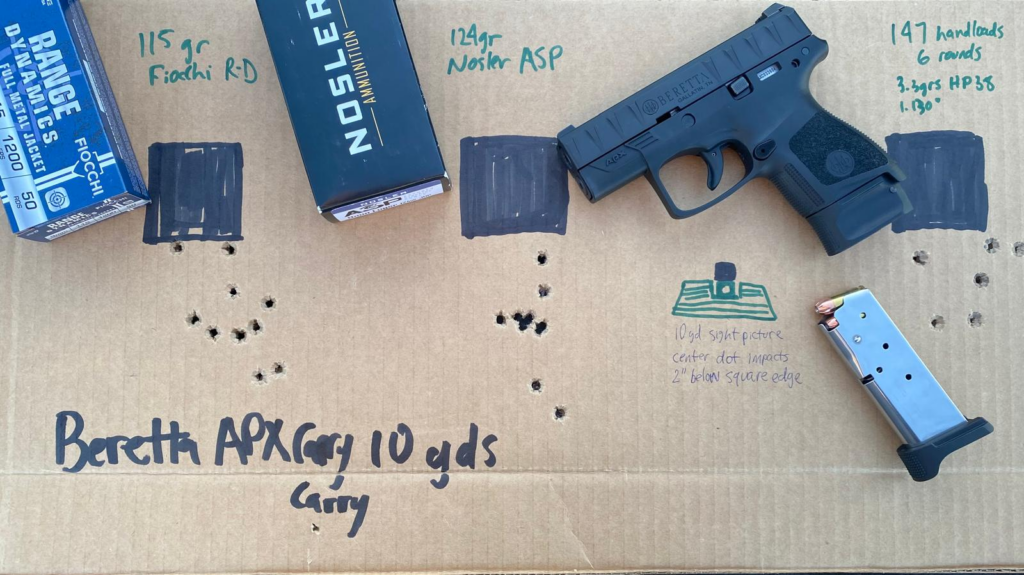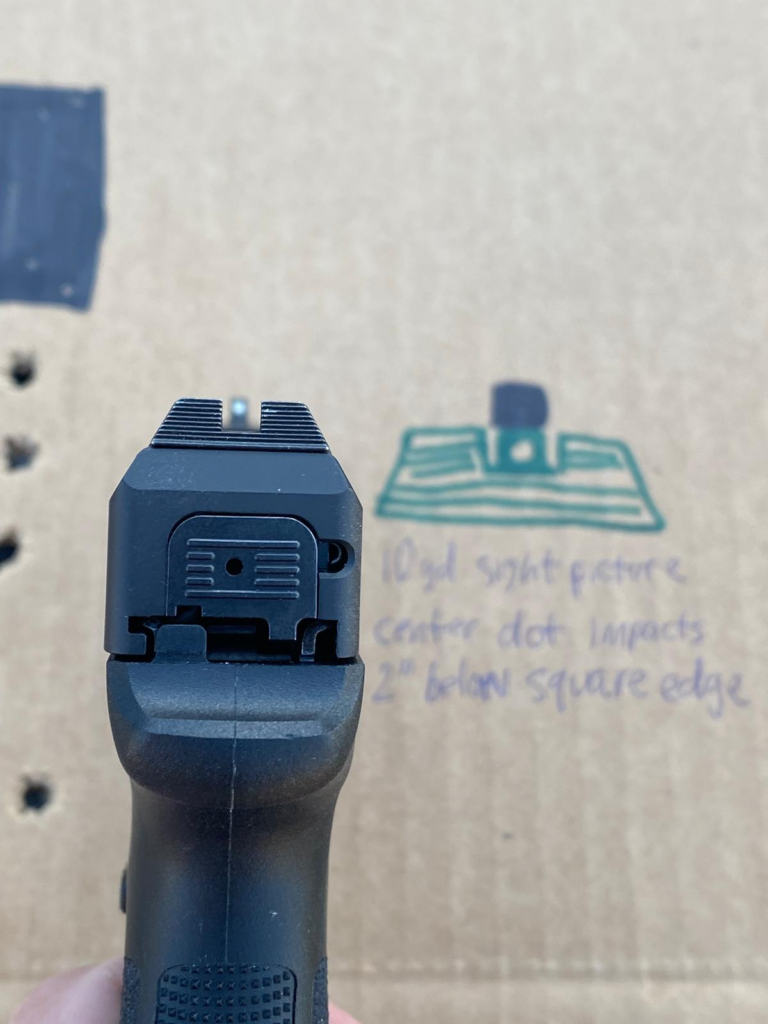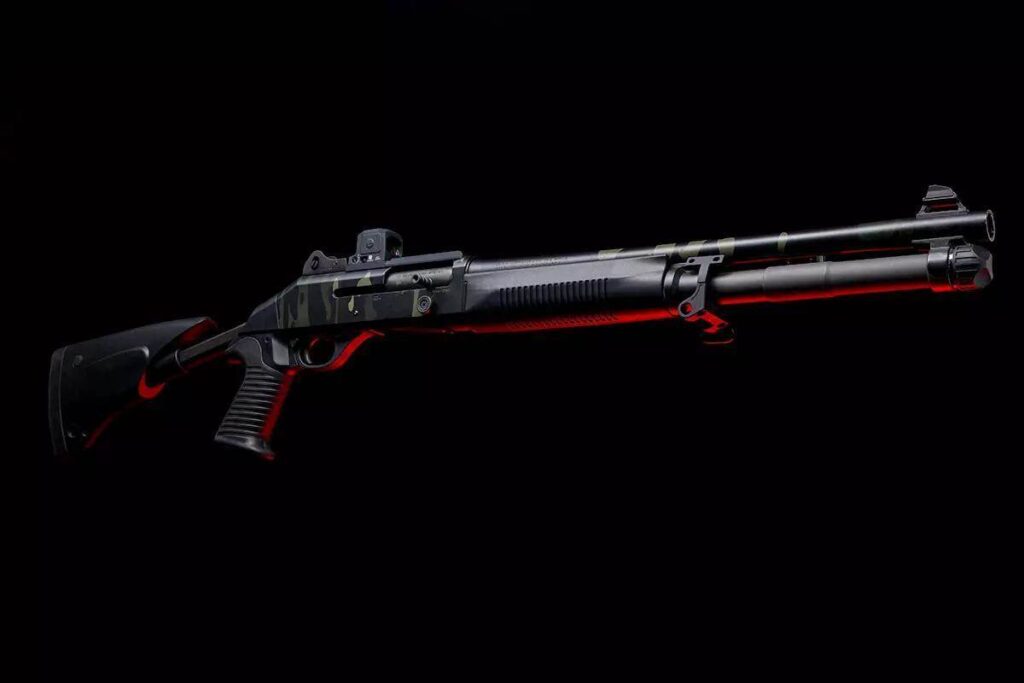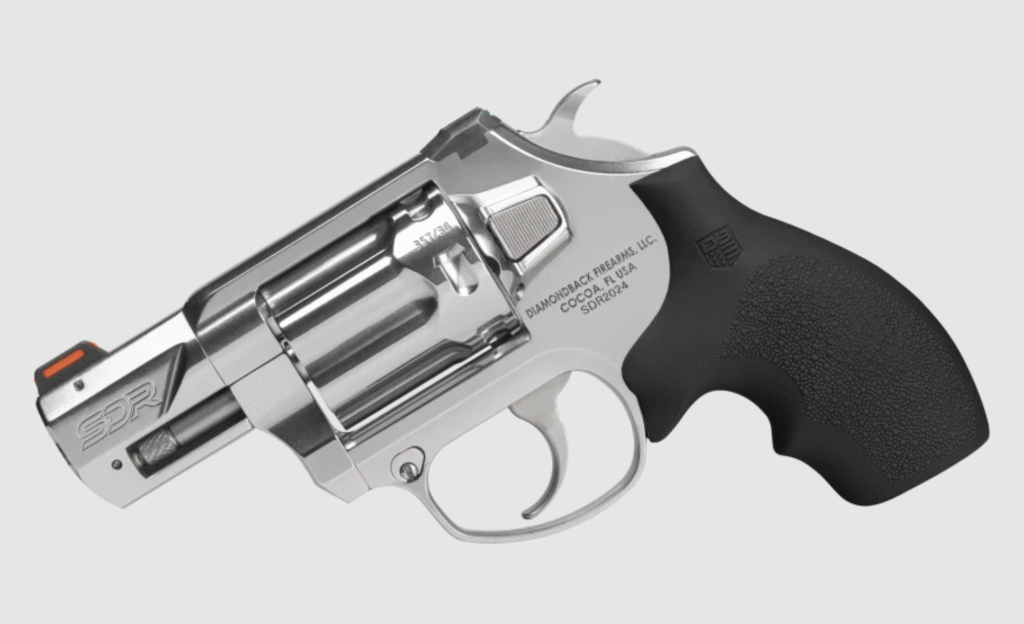Continued From Part 1:
The Beretta APX Carry is Beretta’s first-generation ultra-compact 9mm, which rounded out the APX family with a “slim” EDC option. In Part 1, I wrote about the pistol and some of its features in general. Part 2 is a continuation of my thoughts about the Beretta APX’s trigger and what it’s like to shoot it.
The Original APX Carry’s Trigger
Although the Beretta APX Carry uses a striker-fired action, its trigger is peculiar. It resembles a double-action revolver trigger instead of the typical striker-fired semi-auto trigger. This means that shooters will either love or hate the trigger. It depends on their philosophy concerning defensive handgun triggers.
Describing the Beretta APX Carry as an 8-shot flat semi-auto revolver would sound very strange, but it would be an apt description. As far as the longer “double-action” feeling trigger is concerned, these break in the low 7-lb range. And they’re not too bad. The way it feels and breaks actually reminded me of the Ruger LCR.
Advertisement — Continue Reading Below
It’s worth mentioning that there is an entire school of thought devoted to having a slightly longer and/or heavier trigger pull on a defensive firearm. Specifically, it helps to prevent any surprise accidental trigger breaks or negligent discharges with fatal outcomes. This is precisely why TDA (traditional double action) pistols or guns with longer trigger pulls until the shot breaks are still popular amongst certain elements of defensive-minded concealed carriers.
HK’s popular LEM (Law Enforcement Modified), with its longer pull, is a good example of what I’m talking about. This is why I don’t think its trigger necessarily seems out of place, given the gun’s primary mission.
Shooting The Beretta APX Carry

Advertisement — Continue Reading Below
As previously mentioned in Part 1, this specific APX Carry has seen numerous rounds since it first entered the family. For this write-up, I grabbed what I had on hand. This consisted of 115-grain FMJ Fiocchi Range Dynamics, 124-grain JHP Nosler ASP, and six loose rounds of my previously mentioned 147-grain reloads that I was able to scrounge up.
It’s a pity I didn’t have any full-power 147-grain factory rounds, such as Federal’s 147-grain HSTs, on hand for my informal 10-yard accuracy test.
This test consisted of taking ten careful shots at 10 yards to group the pistol (freestyle). I understand that different 9mm loads will print lower or higher than the gun’s true point of aim. So, I sketched out some black 2”x2” squares on a piece of cardboard and placed it 10 yards away.
Advertisement — Continue Reading Below
The Beretta APX Carry uses a “center-hold” sight picture. However, I shot these black squares using a careful and precise 6 o’clock hold, holding the top edge of the front sight against the bottom edge of the black square.
APX Carry Performance

As you can see from the pictures, the pistol had a real affinity for the 124-grain Nosler ASP JHP loads. Because of my 6 o’clock hold, the core of that Nosler 10-shot group was approximately 2” low. There’s no doubt that I’d punch the black square had I aimed with a center hold.
Advertisement — Continue Reading Below
My 10-shot Fiocchi group was not as tight as the Nosler group, but the core of those shots also printed roughly 2” low in the same spot. Although not precise, we can deduce that the gun “shoots to its sights” at 10 yards with standard velocity factory ammo.
I shot the third square with those loose six rounds of my handloads for fun. Not to mention, I had already taken the time to set this up for the other two loads. Keeping in mind that these are marginally loaded and subsonic out of full-size pistols, the shots at least printed under the area of their square.
It’s my experience that heavier 147-grain bullets tend to print more consistently when there’s a stouter propellant charge behind them. Interestingly enough, the Beretta APX Carry has never had an issue cycling these underpowered handloads.
Advertisement — Continue Reading Below
The Takeaway
I am satisfied with the APX Carry’s accuracy from both of my 10 yard 10-shot groups using two types of factory ammo. Frankly, this gun has been kept under lubricated. However, even though it’s not seen a substantial quantity of rounds, it remains a very reliable pistol. The top-heavy slide does seem to provide a dampening effect against some of the harsher ultra-compact pistol recoil.
Originally, I thought I wouldn’t mind its revolver-esque trigger all too much, but after shooting it for accuracy, I changed my mind. It could be that I’m too used to shooting standard striker-fired triggers. More specifically, mastering the longer trigger pull can be tricky, exactly the same way as it would on a snub revolver. Likewise, it adds a slight degree of difficulty on top of already being a smaller gun, which can be harder to master.
If one isn’t careful about keeping the correct amount of tension with their support hand, there is a propensity to drop the shot when trying to pull the trigger all the way back to break the shot. This can be observed with both my Nosler and Fiocchi groups, as each has two holes beneath the rest of the group. This is precisely how I came to drop those shots. Of course, the cure for this phenomenon is practice and repetition.
Advertisement — Continue Reading Below
Conclusion
In Part 1, I pointed out how I thought the gun was a little large for its size, given its capacity. This is partially driven by the fact that it feeds off true single-stack magazines, and besides the pseudo-revolver trigger, that’s its other drawback. On the flip side, the APX Carry’s grip is very nice and slim and that’s probably my favorite aspect about it.
As an older model that’s now discontinued, it won’t be sold in shops as a new item. But for the right price, the Beretta APX Carry can still make for a viable three-inch ultra-compact 9mm.















